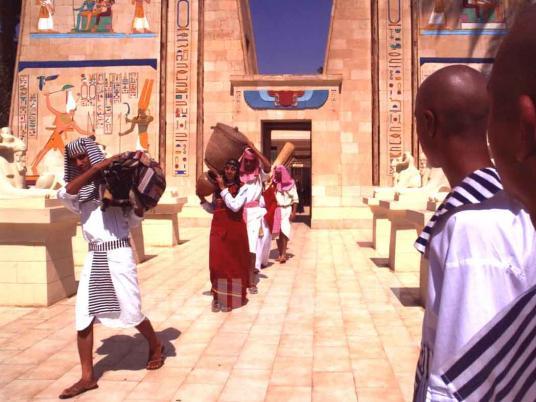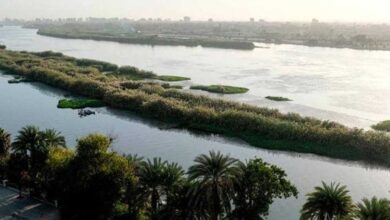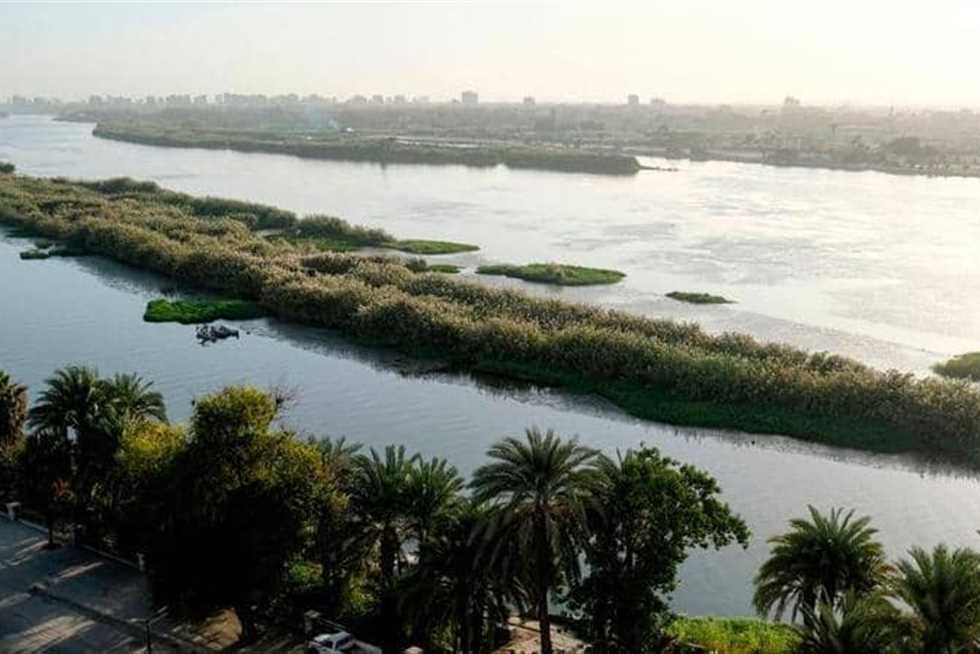
Now that a wall and barbed wire have been placed at the end of Qasr al-Aini street, traffic chaos in the area has moved to a whole new level. Drivers now cut through once-peaceful Garden City and pop out on the two-way Corniche al-Nil at strategic points to avoid the constant pile-up of traffic near the Semiramis Hotel. For those who live and work in Garden City, this enterprising driving is a necessity as they head to Zamalek or Mohandiseen. Other residents of Cairo have abandoned the Corniche for the west bank of the Nile: Giza, and in particular Bahr al-Azam street.
Bahr al-Azam runs opposite the Maadi corniche and continues until it forks into the Giza corniche and the bridge to Manial. The street itself can accommodate four lanes in either direction, providing space for everything from trucks and microbuses to Nile fish sellers and watermelon carts. The street was not always so wide — it was named Bahr al-Azam in the 1920s when it was a small lane.
The street's history follows the political changes of the past century. "In the thirties, it was widened from a little lane to approximately half its present size and renamed King Farouk Avenue," says Saeed, a taxi driver who grew up in the residential district off the street and heard stories about its history from other residents over the years. “After 1952, it was named Gamal Abdel Nasser for a few years — a testament to the importance of the street.”
During the presidency of Anwar al-Sadat, the street was named al-Nil street. The Bahr al-Azam name slowly returned to the part of the street before the bridge to Manial. "Leaders are always changing street names in Cairo," says Samia, a fish seller on Bahr al-Azam street. "Residents here have always called it Bahr al-Azam and now it is the accepted name."
To the south, Bahr al-Azam becomes the road to Upper Egypt and passes through the Mohamed Ali Sporting Club, a combined restaurant/pool/recreation area that was recently destroyed. Residents of Bahr al-Azam street claim the vandalism was the work of thugs.
By taking Bahr Al-Azam, one can escape Old Cairo, Garden City and Tahrir on the way to Zamalek and Mohandiseen. The first exit on the Moneeb Bridge after the Maadi corniche will drop you there and send you hurtling on your way to Giza. On your left are row upon row of stores and tall buildings that give way to small side streets winding through densely populated residential neighborhoods. The street was recently cleaned and repainted by a group of volunteers from Raya, in an effort to work with the community to beautify Cairo. Other attempts have been made to make the street more attractive for drivers and pedestrians alike. “The street gets cleaner but people ruin it again,” complains Um Lotfi, who sells watermelons in the summer and oranges in the winter.
Pharmacies and clothing stores abound at the Manesterly Towers, along with a branch of Tseppas, the Manesterly Supermarket and a number of travel offices. Ceramic stores cluster near the end of the street, selling bathroom and kitchen tiles. To your right, along the Nile, the main landmark is the Pharaonic Village, a center set up by Archaeologist Dr. Ragab so visitors can experience life in pharaonic times. The tour includes a trip along the Nile, a visit to a working water wheel, and traditional bread baking, all supported by a cast of actors who recreate this ancient lifestyle as their own. Visitors can dress up as a pharaonic family and have their picture taken. Nearby is Safari, a family restaurant on the Nile. Locals swear by the fish seller on Bahr al-Azam near the Pharaonic Village. Any day of the week, the fish market offers up the Nile's catch of the day. From the market, one can also take the ferry to Gezirat al-Qursaya.
“Despite the traffic, it’s a great street to live by,” says Islam, who lives in a small flat in the Manesterly towers. “Its proximity to Maadi and Giza make it ideal and the Nile view is a great bonus.”




